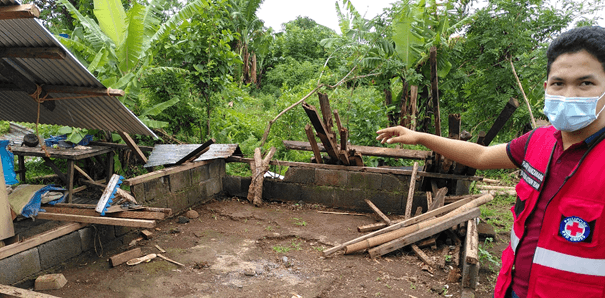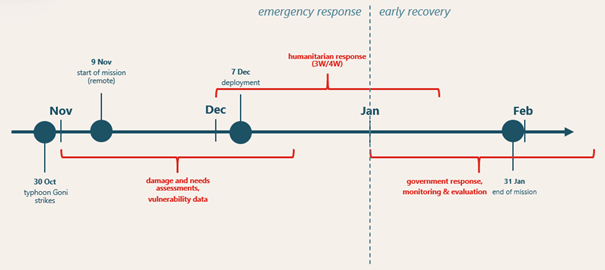Written by Sander Houston
The Philippines is the most exposed country in the world to tropical storms. When the world was captivated by the U.S. elections in November last year the Goni & Vamco Typhoons made destructive tracks throughout the country leaving many without proper shelter. Damage driven damage and need assessments increase the speed at which humanitarian aid can operate in these situations. Consequently, a field study was executed in order to collect information on ongoing support activities and to assess outstanding shelter needs.
Parties involved
The IFRC-led Shelter Cluster supported The Philippines Red Cross (PRC) in planning and assessing the distribution of CGI sheets in order to rebuild roofs that have been damaged or blown away; also, it gave technical advice on new projects to (re-)build permanent and sustainable shelter for those who lost their home. 510 team member Jacopo Margutti was part of the local team as an Information Manager (IM) in order to develop data products, data strategy, provide data literacy guidance and evaluate the results.
Digital transformation
The use of data to support damage and need assessments improves the speed and effectiveness of local distribution of humanitarian aid. Shortening the timeline is crucial when trying to maximize the amount of people helped, as much as targeting the right people. Digital transformation is an ongoing process that helps parties speed up their damage and needs assessment practices, expand their understanding of data and supports them operating independently. 510 for example supports the Shelter Cluster in increasing the use of data in operations and data literacy.
Also, data and digital tools can help humanitarian organizations make sense of vast operations, in order to identify gaps in the response and coordinate their efforts with other agencies and/or the government.
By learning from the practical implementation of humanitarian aid, the gap between theory and practice can be narrowed. This creates a feedback loop benefiting future responses.

Philippines Red Cross worker Alda Manzanades during the field study.
Our role
The 510 team developed data and digital products to disseminate information among all partners of the Shelter Cluster (humanitarian agencies and the government). With the data strategy the involved parties were able to clarify what data to collect and by what method. In this case, satellite images were collected and a field study was conducted. Evaluation of the results was presented to the involved parties. Building IM capacity was implemented in the program through trainings to PRC.
Specific examples of products developed include interactive web maps (ArcGIS) and web dashboards (PowerBI).

Situational overview from interactive map (ArcGIS).
Main findings
- The humanitarian world is moving more and more towards data & digital solutions. 510 works in data capacity and therefore can provide support in this important matter.
- Difference between theory and practice: human behavior is an important factor to continuously take into consideration when planning for or implementing activities. Resources might be employed differently by people than initially intended.
- Operational constraints: very specific local context can make the difference between success and failure. Affected people are more resourceful and resilient than what we might assume.

Timeline of field study phases